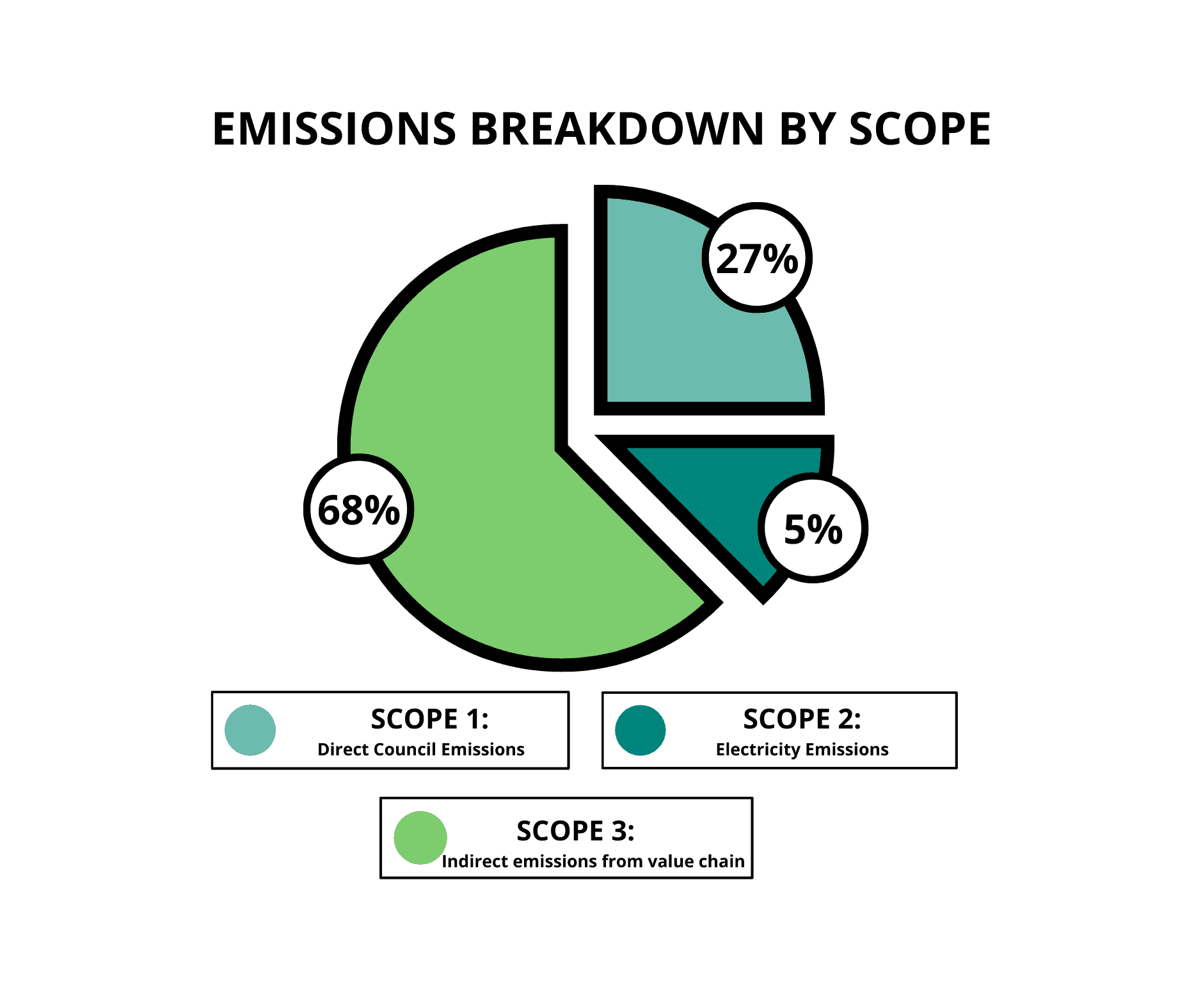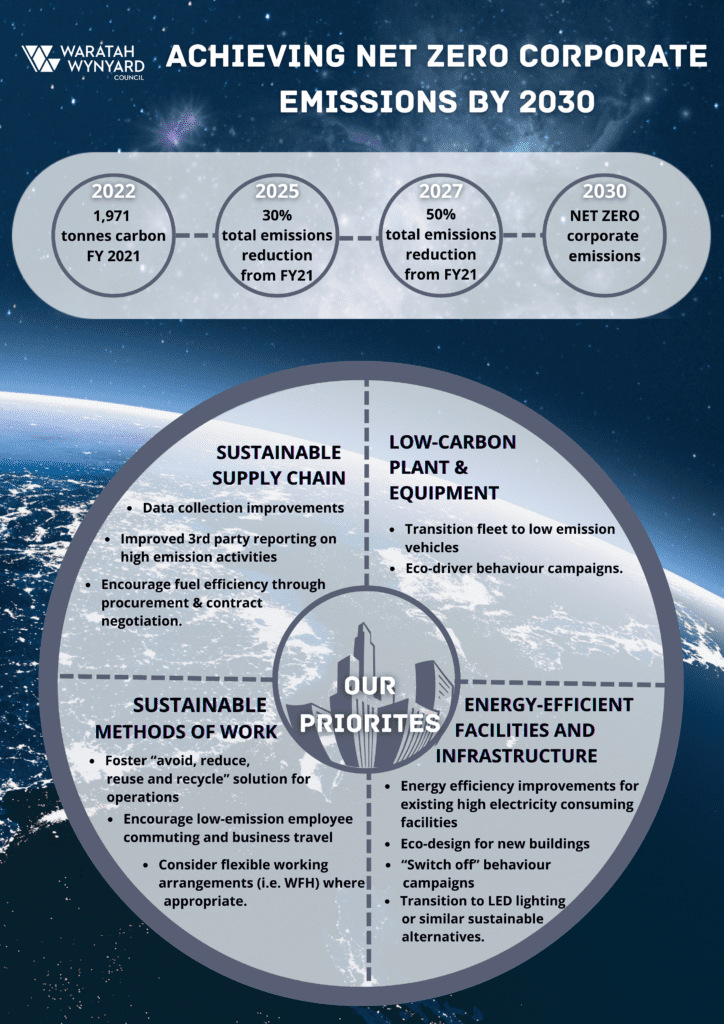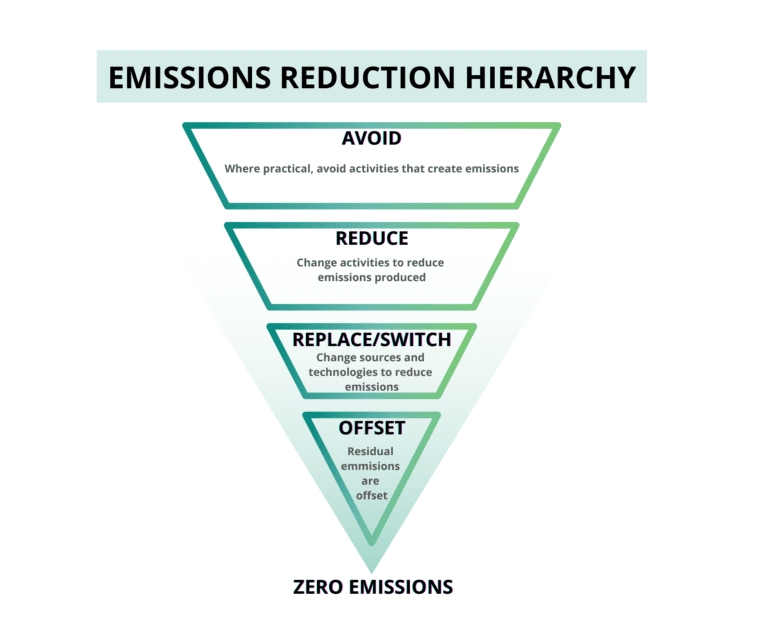Waratah-Wynyard Council is committed to sustainability.
In order to do this, Council has set an ambitious goal of net-zero corporate emissions by 2030.
This means that emissions from our operations will be avoided (where possible), reduced and replaced by low-carbon alternatives. Any residual emissions will be offset through the use of carbon reducing credits.
Australia is a signatory to the Paris Agreement, which commits Australia to helping keep the global temperature rise this century to below 2 degrees Celsius above pre-industrial levels, with a preferred limit of 1.5 degrees. Signatories to this agreement agree to rapidly reduce emissions to limit further warming.
In line with the principles of iCEP, Council is committed to mitigation of climate change through corporate responsibility. One of the many methods to approach this is by understanding our own corporate emissions profile and working to reduce the amount of emissions we create as part of our operations.
An independent audit was completed during 2022 to understand Council’s emissions boundary and determine its carbon footprint. The analysis was completed for the 2020/21 financial year which will now be used as our baseline for future assessments.
A copy of the full report for the baseline 2021 financial year can be found here [1].
In summary, Council produces 1,971 tonnes of carbon for its operations, which has the equivalent emissions intensity of 142kg of carbon for every person within Waratah-Wynyard.
Our largest emissions source is indirectly created through our value chain. Predominately this is through contractor fuel and construction materials and services. Our second-largest emissions category is Council’s own fuel and transport sources. [2]
[2]
The iCEP includes several activities that relate directly to the reduction of corporate carbon emissions. Council intends to progress these activities in line with the intentions of iCEP.
In addition, four priority areas have been identified to ensure Council’s reduction efforts are focussed on operational areas that will have greatest impact on our carbon footprint. These priorities include:
- Low-carbon plant and equipment
- Energy-efficient facilities and infrastructure
- Sustainable supply chain
- Sustainable methods of work
Actions for reducing emissions will be identified and prioritised based on its impact, council’s own ability to influence, cost of abatement, strategic alignment and technological availability.
Regular emissions reporting is crucial to ensuring the targets are being met. As a minimum, Council aim to complete a carbon audit for the financial years ending: 2025, 2027 and 2030.



